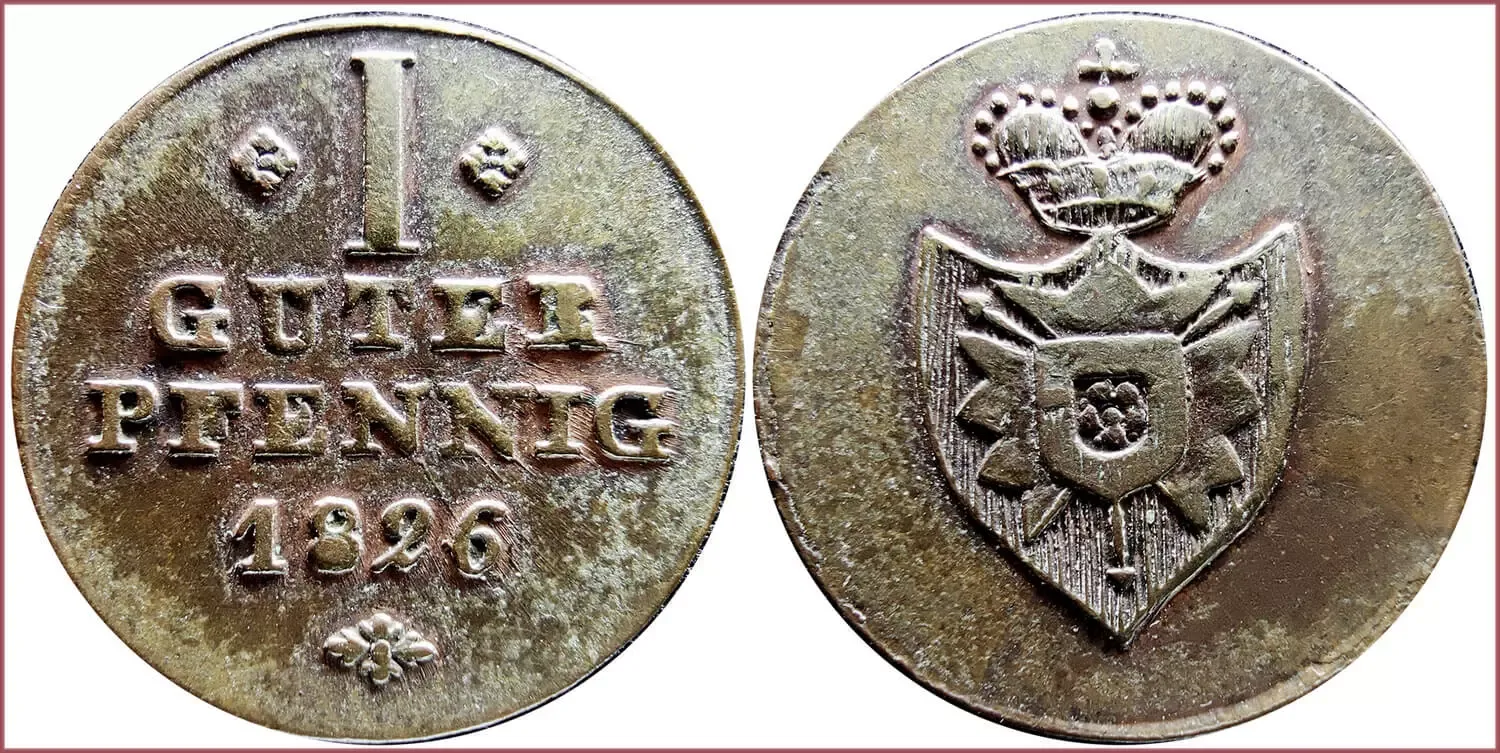GUTER PFENNIG: COIN OF SCHAUMBURG-LIPPE
1 guter pfennig, 1826: Principality of Schaumburg-Lippe (Germany)
Ruler: Georg Wilhelm — Count and later Prince of Schaumburg-Lippe.
I GUTER PFENNIG.
Crowned coat of arms of the Principality of Schaumburg-Lippe.
The only coin of the Principality of Schaumburg-Lippe of guter pfennig denomination.
- Copper: 20 mm - 2.28 g
- Reference price: 14$
COIN GUTER PFENNIG — WHERE & WHEN (coins catalog: by names & emitents)
- GERMAN STATES, 17th-19th centuries (Principality of Anhalt-Bernburg, Margraviate of Brandenburg-Ansbach, Margraviate of Brandenburg-Bayreuth, Duchy of Brunswick-Lüneburg, Electorate of Hesse, Landgraviate of Hessen-Kassel, Kingdom of Prussia, Grand duchy of Saxe-Weimar-Eisenach, Principality of Schaumburg-Lippe...): guter pfennig = 1/288 thaler
GUTER PFENNIG (also GUTERPFENNIG or often GUTE PFENNIG) as coin name.
Guter pfennig — small silver (or rather billon) and copper coin of a number of German states in the 17th-19th centuries. One of the varieties of pfennig.
For several centuries, three main coins were used in the lands of the north and center of Germany: thaler, groschen and pfennig. The relationship between them changed over time. Varieties of groschens and pfennigs appeared.
From the 14th century the so-called meißner groschen is spreading. Later, schildgroschen, schwertgroschen, mariengroschen, apfelgroschen appear... On the eve of the devastating Thirty Years' War (1618-1648), the main exchange unit of the thaler becomes the fürstengroschen (1/24 thaler). However, due to difficult times for Europe, the quality of coins steadily declined. Gradually, fürstengroschen was replaced by relatively low-quality mariengroschen (1/36 thaler).
After the end of the hostilities, the issue of high-quality money, which was colloquially known as guter groschen ("good groschen" in German), was resumed. After some time, this name appeared directly on coins (often "gute groschen"). Guter pfennig as 1/12 guter groschen became the exchange coin. It was made of silver (bilon), later — of copper.
Ordinary pfennigs in the 18th century became exclusively copper. The guter pfennig was 1/288th of a thaler, while the regular (light) pfennig was 1/360th of a thaler.
The coin's name guter pfennig literally means "good pfennig" in German. It is a more expensive coin compared to the standard "light" pfennig (leichter pfenning), which was used in parallel.

